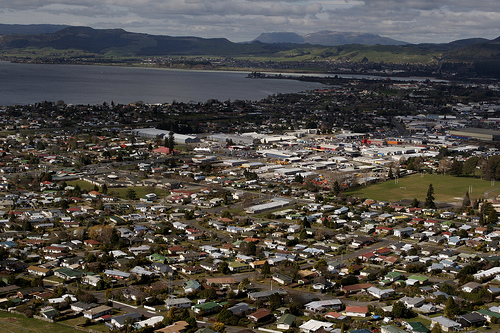Have a relaxing holiday in Rotorua.
- Rotorua is a lakeside city located on the North Island of New Zealand, in the Pacific, and it is part of the district with the same name.
- As of 2014, Rotorua was ranked as the tenth most populous city in New Zealand, with a population of approximately 56,200 people.
- The Rotorua area is home to numerous hot springs, geysers and mud pools, due to its proximity to the Mount Tarawera volcano, all of which have become popular tourist attractions, although the attraction’s release of rotten egg-smelling hydrogen sulphide can be unpleasant.
- The term ‘Rotorua’ comes from the words ‘roto’ and ‘rua’, which can be translated from the native Maori language to mean ‘second lake’, while the full name of the place is ‘Te Rotorua-nui-a-Kahumatamomoe’.
- A Danish trader named Phillip Tapsell, who later married a native, is likely to be the first European to set foot in Rotorua, in the late 1820s.
 Part of Rotorua
Part of Rotorua
Image courtesy of Gene Fama/Flickr
- The notable geographical points of interest in Rotorua, such as hot springs, were visited by tourists in the 1880s, and the features made the town a popular tourist destination, especially after the railway was built, by 1894.
- The first community to live in the area of Rotorua was the native Te Arawa Maori group; and the city’s first mayor, Member of Parliament Cecil Clinkard, was chosen in 1923; while the town was declared a city in 1962.
- Rotorua has average temperatures that range from 8.1°C to 17.3°C (46.6°F to 63.1°F); and it is a sister city to Lake Macquarie in Australia, Klamath Falls in the United States, Wuzhong in China, and Beppu in Japan.
- Rotorua is situated next to a large lake of the same name, 10 other lakes of significant size, and a number of smaller lakes; and the city and surrounding area features popular sporting activities that include sailing, shooting, skydiving, waterskiing, biking and fishing.
- Rotorua covers an area of almost 90 square kilometres (34.7 square miles), while the surrounding community district covers around 2615 square kilometres (1009.6 square miles).




